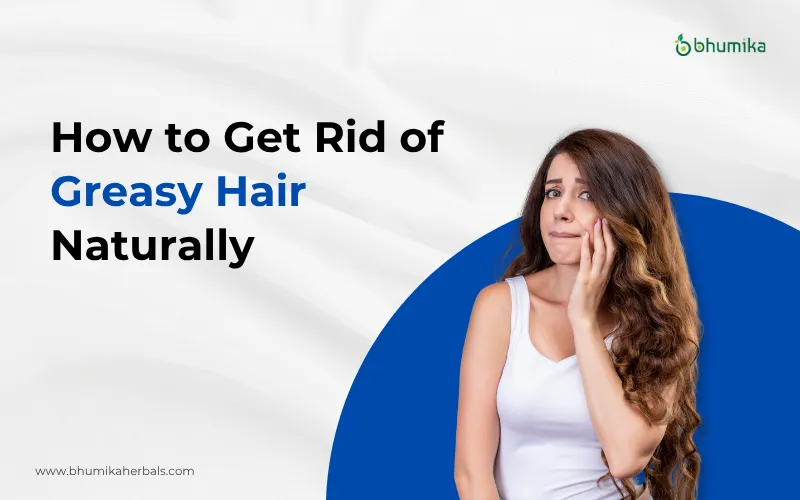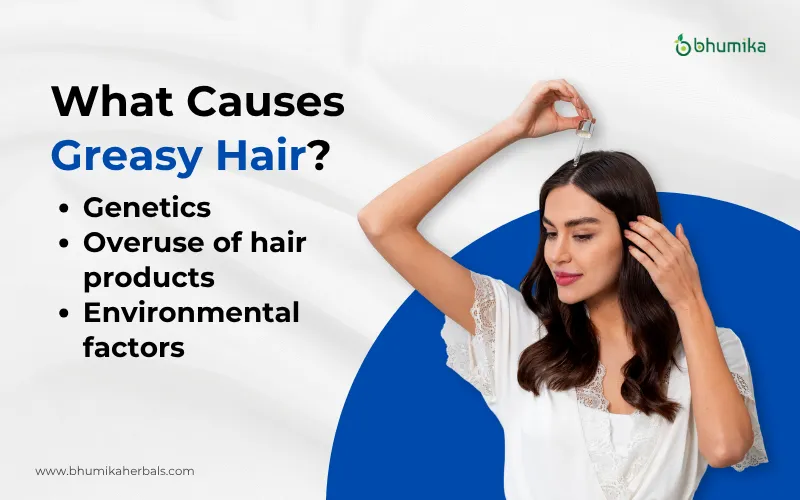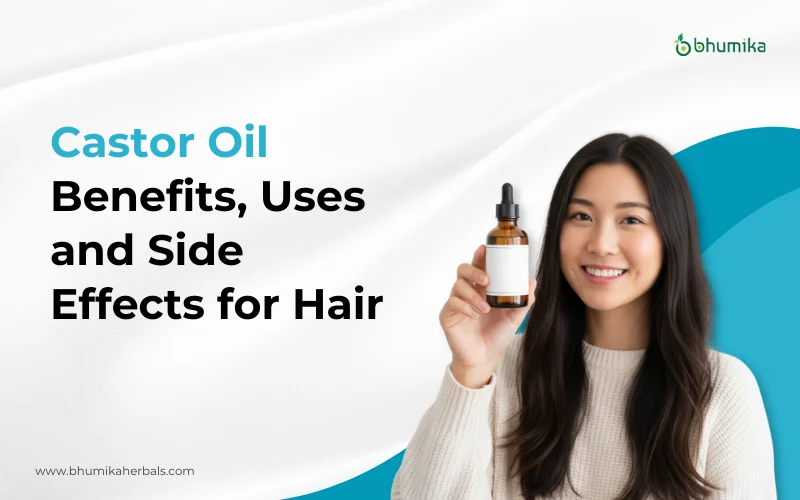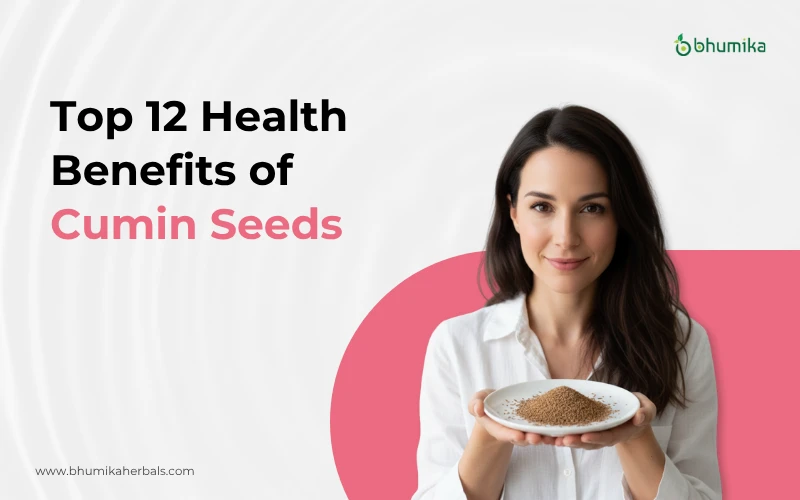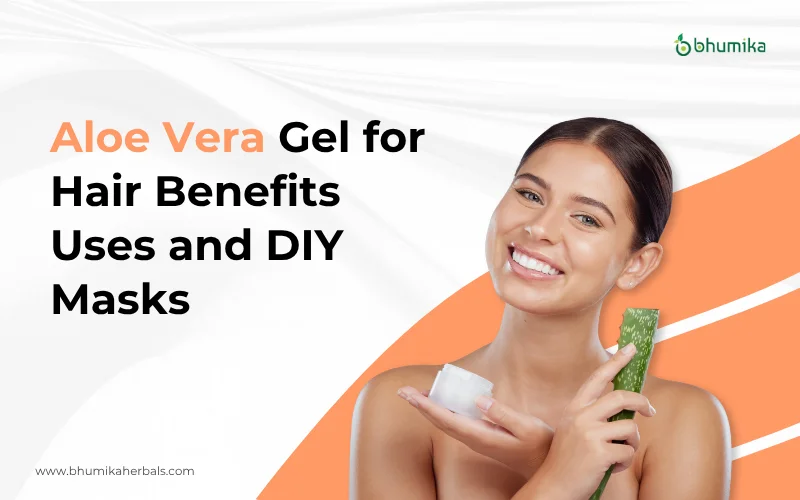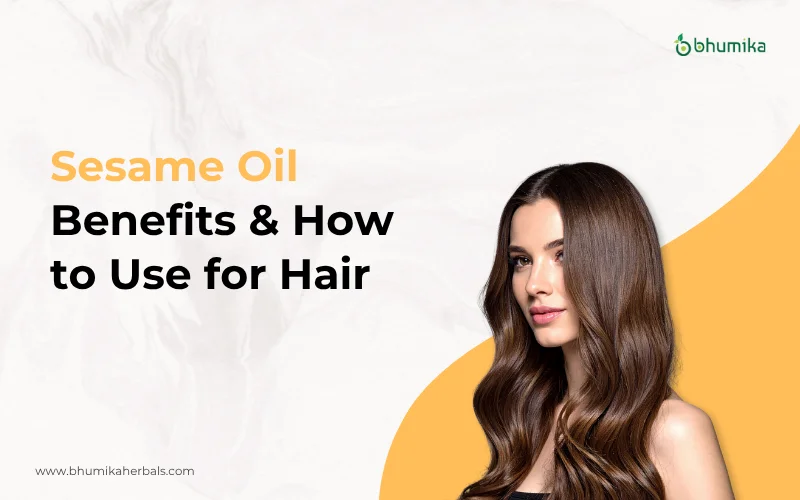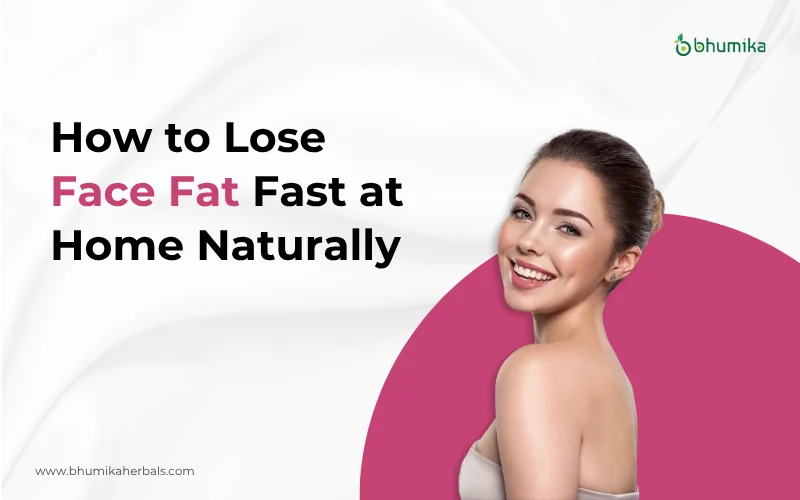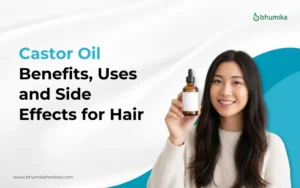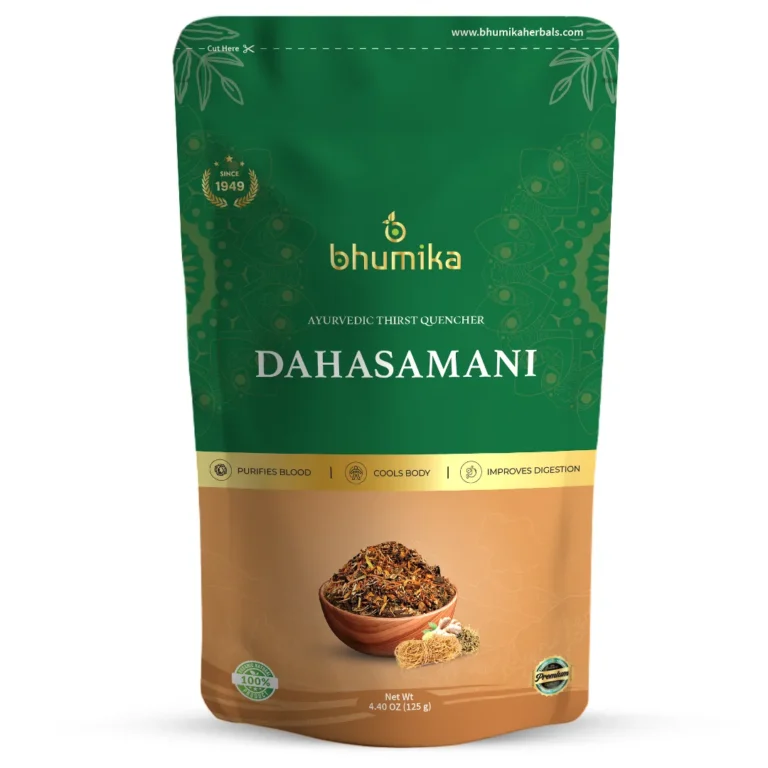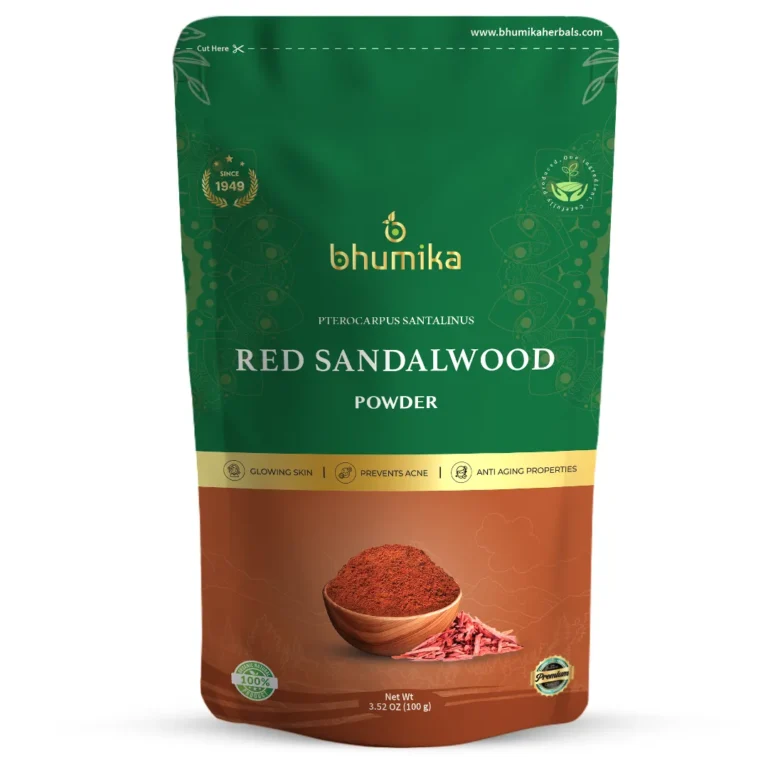Greasy Hair – Meaning, Causes & Home Remedies
Share this!
Greasy hair is something almost everyone has faced at some point. It can make your hair look flat, oily, and unclean, even if you have just washed it. Don’t worry, as you are not alone in this battle. Greasy hair usually happens because of natural oils (sebum) produced by your scalp. With the right care, you can manage it and keep your hair looking healthy and clean.
So in this article, we will guide you through the common causes of greasy hair, along with some easy home remedies to reduce oiliness. We will also discuss the tips for keeping your hair non-greasy and share the different hairstyles that work well on oily hair.
What is Greasy Hair?
We all wish to get naturally smooth and shiny hair, but this often comes with extra oil production. Your scalp produces sebum to replace the natural oils lost during washing. Washing too frequently can make your scalp produce even more oil, which leads to greasy hair.
The meaning of greasy hair is simple, and it refers to hair that looks oily and weighed down due to overactive sebaceous glands. Even though sebum is essential for healthy hair, too much sebum can make your hair appear oily and flat.
With the right hair care products, home remedies and simple tips, you can manage it effectively. Also, it’s essential to identify the root cause of your greasy hair to choose the best routine for your hair type.
What Causes Greasy Hair?
You may experience hair issues like dandruff, weak strands, and hair fall due to greasy hair. To deal with these problems, you need to first understand why your hair is getting oily. Here are some common reasons your hair becomes oily:
- Genetics: Your genes can influence how oily your scalp is. Some people naturally produce more sebum. In women, health issues such as PCOD (polycystic ovary syndrome), liver problems, or certain autoimmune conditions can make the scalp produce extra oil, resulting in greasy hair.
- Hair washing frequency: Washing your hair too often can strip off your scalp’s natural oils. To compensate, the sebaceous glands in your scalp may produce more oil, making your hair greasy. Also, not washing hair when it’s dirty can cause bacteria to grow, which can affect your scalp health. To avoid greasy hair, washing your hair at the right times is essential. You may wash your hair whenever it feels sticky or dirty, usually every 3-4 days.
- Overuse of hair products: If you use hair care products in the right way, it can keep your hair healthy. But its overuse can lead to greasy hair. Product buildup on the scalp can make your hair look oily and heavy. Use products in small amounts and on the right areas. For example, you must apply nourishing serums only to the mid-lengths and ends of your hair, and avoid using them on the roots.
- Diet Causes Oily Hair: The food you eat can influence how your scalp produces oil. Food high in sugar, processed foods, red meat, or excess protein can overactivate the sebaceous glands, making your hair greasier. Also, unhealthy eating may affect your hormone balance, increasing oil production.
- Environmental factors: Environmental factors, such as dust, pollution, and sun exposure, can make your hair look greasy. Hot winds or changes in weather can increase sweating, which may promote bacterial growth and disturb your scalp’s natural oil balance. In winter, the scalp by itself tends to produce more oil, and if you don’t wash it properly, it can make your hair look greasy. Using very hot water for hair wash can worsen this by stripping natural oils. In summer, sweat can also make your hair appear oily and unclean.
Home Remedies for Greasy Hair
If your scalp tends to get oily, there are several home remedies for greasy hair that can help manage it. Here are some popular remedies that use natural ingredients to control excess oil and maintain fresh, clean hair:
Aloe Vera
Aloe Vera possesses antibacterial properties that can help calm and balance an oily or irritated scalp. It can also nourish your hair, making it healthier and shinier.
Directions:
- Take fresh, organic aloe vera gel and apply it evenly to your scalp and hair.
- Massage it into your scalp for a few minutes.
- After 20 minutes, rinse your hair thoroughly with lukewarm water.
- Use this mask 1-2 times a week for best results.
Green Tea
Green tea is packed with antioxidants and tannins that can help control excess oil and calm the scalp, keeping your hair healthy and refreshed.
Directions:
- Brew a strong cup of green tea and let it cool completely.
- You can pour the cooled tea directly over your hair after shampooing, or pour it into a spray bottle for easy application on the scalp.
- Massage gently and leave it on for a few minutes.
- Rinse thoroughly with water.
Egg Yolk
Egg yolks are rich in protein and sulfur, which help control excess oil on the scalp. They can also strengthen your hair, balance the scalp’s pH, and reduce oil production.
Directions:
- In a bowl, mix 1 egg yolk with 1 teaspoon of coconut oil and a few drops of lemon juice.
- Apply the mixture evenly to your scalp and hair.
- Leave it on for 20-25 minutes.
- Rinse thoroughly with cold water.
Lemon Juice
Lemon juice can help reduce excess oil on the scalp due to its acidic nature. It also works to prevent dandruff and keeps your scalp fresh.
Directions:
- Squeeze 2 tablespoons of fresh lemon juice and mix it with 1 cup of water.
- Pour the mixture over your scalp and hair after shampooing.
- Massage your scalp for a few minutes.
- After leaving it on for 3-5 minutes, rinse off well.
Baking Soda
Baking soda helps clean your scalp by removing dirt and oil. The exfoliating properties of baking soda help reduce excess oil and support healthier hair growth.
Directions:
- Mix a small amount of baking soda with enough water to make a smooth paste.
- Apply the paste evenly to your scalp and hair.
- After 20 minutes, wash off your hair.
Apple Cider Vinegar
Apple cider vinegar (ACV) can help control excess oil on the scalp and keep your hair fresh.
Directions:
- Mix 2-3 teaspoons of apple cider vinegar with 1 cup of water.
- After shampooing, pour the mixture over your hair and scalp.
- Massage your scalp and leave it on for a few minutes.
- Rinse thoroughly with cold water.
Rice Water
Rice water can help reduce greasiness in the hair. It is abundant in amino acids, vitamins, and antioxidants that can help detoxify your scalp and remove excess oil.
Directions:
- Soak rice in a bowl of water overnight.
- Strain the water the next morning.
- Apply the rice water to your scalp and hair, and massage for a few minutes.
- Rinse thoroughly with clean water and allow your hair to air dry.
Multani Mitti
Multani mitti, also known as Fuller’s Earth, absorbs excess oil and removes dirt from the scalp, leaving your hair clean and refreshed.
Directions:
- Take 2 tablespoons of multani mitti and add enough water to make a smooth, semi-thick paste.
- Apply the paste evenly to your scalp.
- After 20 minutes, rinse thoroughly with cold water.
Tips to Manage Greasy Hair
Making small changes to your hair care routine can help maintain your hair’s natural shine without adding extra oil. If you are wondering how to get rid of greasy hair, here are some simple tips that can help:
Avoid Hair Products that Contain Silicone
Silicones are a common ingredient often added to shampoos and conditioners to make hair appear smooth and shiny. But they can build up on the scalp, block moisture from entering your hair, and even result in more oil production. That’s why it is essential to check the ingredient list before buying any hair care product containing silicone.
Clean your Hairbrush Regularly
With everyday use, your hairbrush collects all the oil, dirt, and product buildup from your scalp and strands. If you don’t clean it often, all that buildup goes back into your hair, making it look greasy again. So, to avoid this, make it a habit to clean your brush at least once a month. Soak it in soap water for about 30 minutes, then rinse well with warm water.
Avoid Hot Showers
A hot shower may wash away the natural oils that keep your hair healthy, leaving it dry and frizzy. So, to compensate for the loss, your scalp may produce even more oil, leaving your hair looking greasy. Use only lukewarm water to protect your hair and scalp.
Don’t Wash Hair Too Often
You should not overwash your hair, because it can make your scalp dry and result in excess oil production. Also, washing too little isn’t good either. So, the best routine is to wash your hair every 2-3 days, or after a heavy workout when you sweat a lot, which helps to keep your hair clean, soft, and less greasy.
Stop Touching Your Hair
Many women have this habit of touching their hair frequently without even realising that it can actually make their hair greasy. Every time you touch your hair, the natural oils from your fingers are transferred to it, leaving it flat and oily. So, to avoid this, try braiding your hair or tying it into a ponytail.
Limit the Use of Heat Styling Tools
When you use heat styling tools like blow dryers and straighteners, they can make your hair oilier faster. Try reducing their use and go for air-drying to reduce greasy hair. After hair wash, gently squeeze out extra water with a microfiber towel and allow your hair to dry naturally.
Use Conditioners the Right Way
Always remember not to apply conditioner to your scalp, as that’s where natural oils build up. You can apply it from the middle length of your hair to the ends, which will help your hair to get the moisture it needs without making your scalp greasy. Also, choose lightweight, oil-free conditioners that are made specifically for oily hair. These products can keep your hair soft and manageable without weighing it down or adding extra grease. Always check labels for “oil-free” or “for oily hair” before buying
Use a Clarifying Shampoo
If you are struggling with oily hair, use a clarifying shampoo that can help clear away extra oil, product buildup, and dirt from your scalp and strands. Also, when picking a shampoo for greasy hair, go for sulphate-free shampoos, because sulphates can be too harsh and make your scalp dry. Instead, choose a gentle shampoo that can clean your scalp well without stripping its natural oils.
Try Scalp Treatments
You can try scalp treatments with ingredients like salicylic acid or tea tree oil to get rid of an oil scalp. Apply them to your scalp before shampooing for the best results.
Salicylic acid helps exfoliate, unclog pores, reduce excess oil, and calm any irritation. Tea tree oil cleanses the scalp and fights bacteria or fungi that can make your hair oily.
You may try these treatments once or twice a week to control oil production, leaving your scalp healthy and less greasy.
Best Hairstyles for Greasy Hair Days
Greasy hair doesn’t mean that you have to hide your hair under a cap. With the right hairstyle, you can turn your oily hair strands into something that can make you look stylish and confident. Here are five easy hairstyles that work perfectly for oily hair:
- Messy buns: One of the best hairstyles for greasy hair is the messy bun, which is stylish and helps hide the oily roots easily. Gather your hair on top of your head, twist it into a bun, and secure it with a hair tie. You may also pull out a few strands to fall in front to give a soft, natural look.
- Braids: To hide your oily strands, you can try different braid styles, such as French, Dutch, or fishtail braids. You may apply a little dry shampoo at the roots before braiding to make it look less greasy.
- Half-up, half-down style: This style works best when you want to cover oily roots but still prefer to show off some length. Take the top half of your hair, twist it into a knot or mini bun, and leave the rest loose.
- The Slicked-Back Ponytail: Comb your hair back into a high or low pony and secure it tightly. The natural oils in your hair offer a smooth, glossy finish, which makes it a perfect hairstyle for work, outings, or even a night out.
- Headband Style: A wide or colourful band can hide oily roots and add instant style to your hair. You can pair a headband with waves, a ponytail, or loose hair that can make you look polished without much effort.
Wrapping Up
Greasy hair can be annoying, and it can affect your confidence, but it is manageable with the proper care. By understanding the causes of your oily hair, choosing suitable treatments, and trying some easy home remedies, you can keep your hair healthier and more balanced. Be consistent with your hair care routine, and you will be able to control it and enjoy clean and healthy hair.
Related Topics
| Homemade Hair Mask for Frizzy Hair | Homemade masks for hair growth |
| 7-Day Hair Care Routine | How to Repair Damaged Hair |
Frequently Asked Questions on Greasy Hair
How to get rid of greasy hair?
To get rid of your greasy hair, wash it every 2-3 days with lukewarm water, use oil-free or clarifying shampoos, and apply conditioner only to the ends. Also, avoid touching your hair, keep your hair brushes clean, limit the use of heat styling tools, and try scalp treatments with tea tree oil or salicylic acid to control oil.
Why does my hair get greasy after one day?
A common reason why your hair is greasy even after a day after washing is washing it too often. Frequent washing can strip away the natural oil from your scalp, which causes an excess oil production to compensate for the loss, leading to greasy hair.
What is greasy hair?
Your hair becomes greasy when the sebaceous glands in your scalp start producing too much sebum. This excess oil coats your hair, making it look oily and flat. The buildup can also collect all the dust and become an environment where bacteria can grow easily.
About the Author
Vishnu Raj
Related Posts
For generations, people have used and trusted castor oil to...Read More
We always dream of having smooth and clear skin, but...Read More
Cumin seeds are a spice known for their rich flavour...Read More
Cardamom, called the queen of spices, is a widely known...Read More
Aloe vera, which is a plant easily found in our...Read More
Coconut oil is one of the most popular hair care...Read More
Sesame oil, rich in nutrients and other vitamins, can help...Read More
Are you staring at the mirror, wondering how to lose...Read More
Share this!
Share this!
Shop by Concern
Acne & Pimples (9) Dandruff & Scalp Itchiness (6) Dark Circles & Puffy Eyes (4) Dead Skin Cells (6) Dehydrated Skin (4) Dry & Damaged Hair (5) Dryness (4) Dry Scalp (6) Dry Skin (4) Dull Skin (8) Excessive Oilness (4) Face Care (9) Fine Lines & Wrinkles (8) Greying (3) Hair Care (8) Hairfall (6) Hair Loss & Growth (6) Hyper Pigmentation (6) Sandalwood Products (3) Skin Brightening (9) Skin Care (8) Stretch Marks (3) Tanned Skin (5) Uneven Skin Tone/ Pigmentation (6) Uneven Skintone/ Texture (5)

